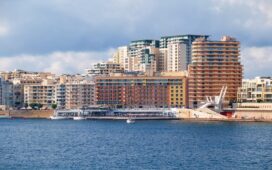The real property market in the UK has proven to be resilient amidst the Covid-19 pandemic. Despite the ongoing health crisis, buyer demand remained at a high level since May 2020. At the same time, prices of real property have increased by up to 5.4% across the country.
The London property market experienced the same trend, but with some differences between its mainstream market and prime property locations. As of October 2020, price growth in Greater London was at 3.9%, while prime properties were by 2-4%.
These figures provide good insights when buying property in London. One of the top cities in the world to live in, owning property in London opens doors to various opportunities in the areas of business, education, and lifestyle.
Before buying property in London, below are some pointers to take into consideration:
- Capital growth.
Capital returns on London property are very apparent. Prices of real estate have increased by 45.6% since the start of 2010. Growth in house prices in the next 12 months are also expected to rise by 5%, which is a reasonable return should you consider investing in residential property.
Meanwhile, if you are investing in property to establish a letting venture, rents in all parts of London continue to rise to as much as 3%. The continuous increase in rentals is seen as a good opportunity for property owners, since the demand for rentals in the city remains high.
- Strong local economy.
Despite the effects of Brexit and the ongoing pandemic, the UK economy proves to be stronger compared to other cities across Europe and even the United States. The price of mortgage products has been steadily increasing since 2015, but with new lenders entering the market, access to funds for property purchase has become easier especially for creditworthy buyers.
According to a market study conducted by Chestertons, prices of real property across the UK will slow down by 1.5%. Prices of property in Greater London may drop by 2% by the end of 2021, while those in Central London and other prime locations may fare better.
- Supply vs. demand.
Based on various studies, there is a big disparity in the prices of real property between Prime Central London (PCL) and Outer Prime London (OPL), and this is dictated by supply and demand.
According to Marketbeat’s 4th Quarter Report for 2020, property values in OPL have risen by up to 6.1% for the past 10 months of 2020. Meanwhile, prices of property in PCL have remained steady, mainly due to the pandemic.
The pandemic has affected the supply-demand balance of property prices in London. Greater demand for real estate purchase was observed in areas in OPL, compared to PCL areas, wherein the most-sought after properties are located.
- Stable, rising rental rates over time.
London is a global financial centre that has one of the best infrastructure systems in the world. It is also home to various renowned universities and commercial districts. While the city’s property market was affected by both the EU referendum in 2016 and the Covid-19 pandemic, London has a reputation for property prices that continue to appreciate over the years.
Investors who intend to purchase buy-to-rent properties in London then get to enjoy rising rental rates, especially given how the rising population in the city is geared towards renting to address their housing needs.
References:
https://www.chestertons.com/en-gb/news/london-market-insight/london-property-market-forecast-2021
https://www.cushmanwakefield.com/en/united-kingdom/insights/central-london-marketbeat
https://justentrepreneurs.co.uk/blog/guide-to-buying-property-in-london
https://www.marshandparsons.co.uk/blog/5-reasons-why-now-is-a-great-time-to-buy-property-in-london/
https://www.greaterlondonproperties.co.uk/can-a-foreigner-buy-property-in-london/







